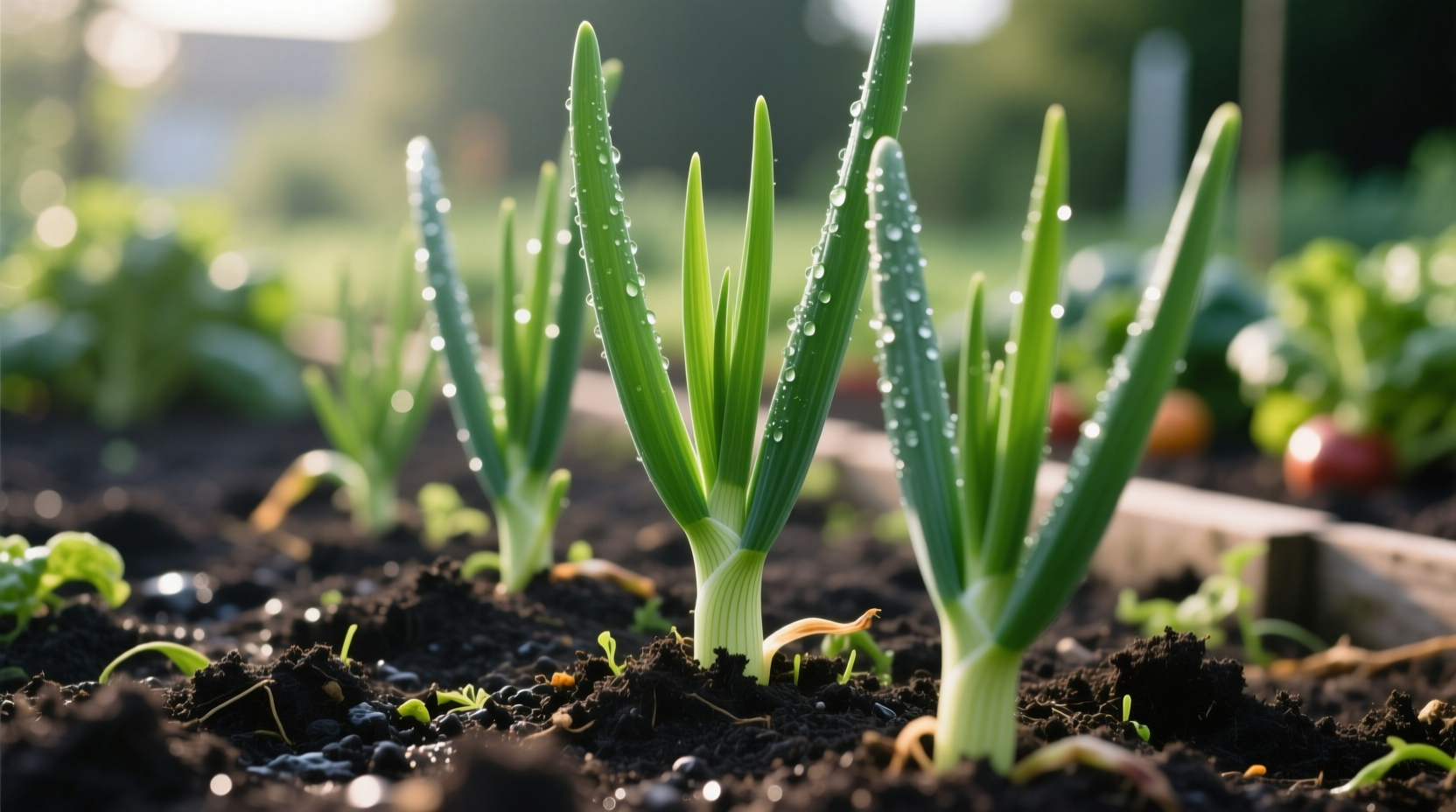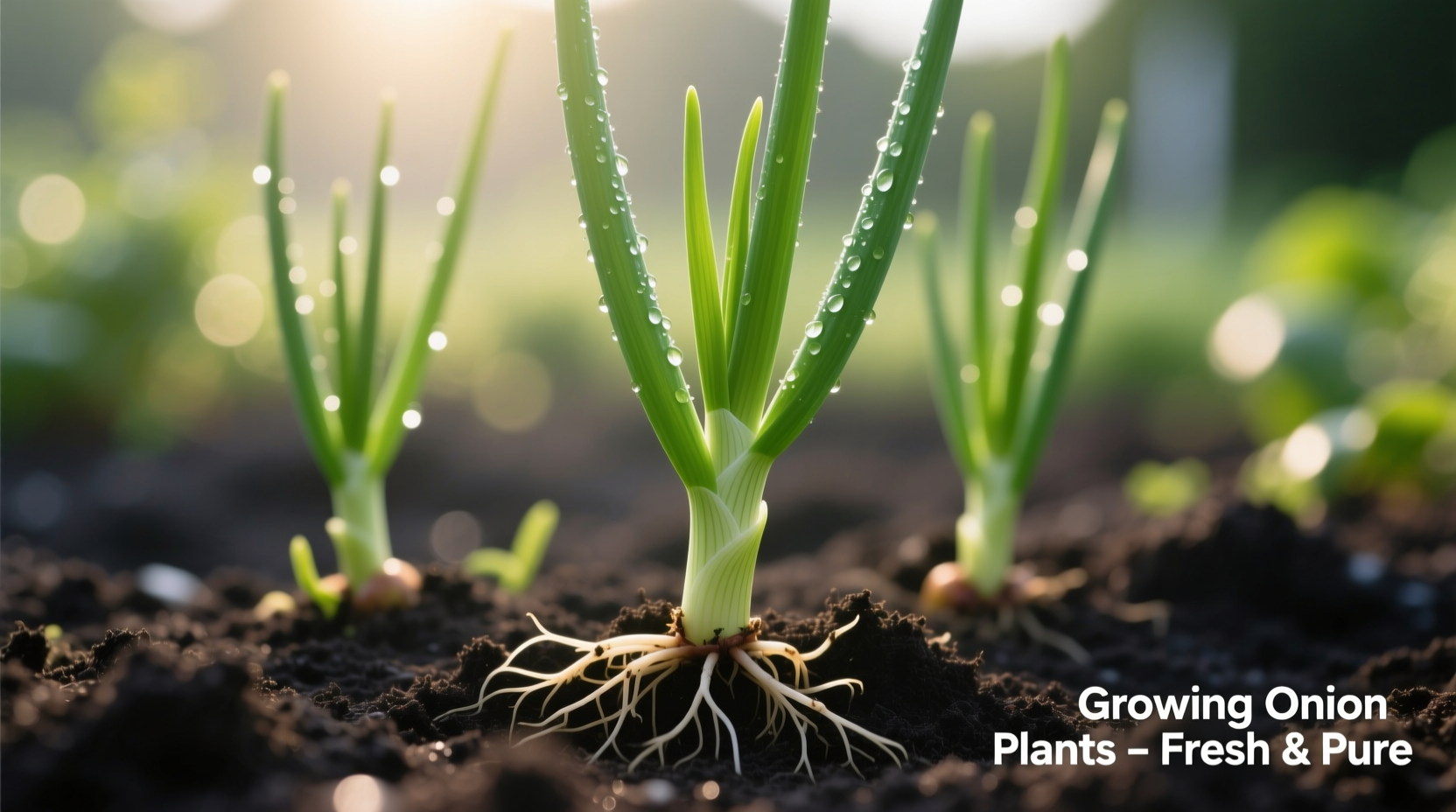Successfully growing onion plants requires planting at the right time for your climate zone, preparing well-draining soil with pH 6.0-6.8, spacing bulbs 4-6 inches apart, providing consistent moisture (1 inch weekly), and harvesting when tops naturally fall over. Most varieties mature in 90-120 days with proper care.
Whether you're a first-time gardener or looking to improve your harvest, growing onions successfully follows a clear path from planning to storage. Onions rank among the top ten most cultivated vegetables worldwide, with global production exceeding 95 million tons annually according to the UN Food and Agriculture Organization. This guide walks you through each critical step using proven techniques from agricultural research and experienced growers.
Planning Your Onion Growing Project
Before touching soil, smart planning determines your onion success. Unlike many vegetables, onions respond dramatically to day length, making variety selection crucial for your location.
| Variety Type | Day Length Requirement | Best Regions | Common Varieties |
|---|---|---|---|
| Short-Day | 10-12 hours | South of 35°N latitude | Granex, Texas Sweet |
| Intermediate-Day | 12-14 hours | 30°-40°N latitude | Candy, Super Star |
| Long-Day | 14-16 hours | North of 35°N latitude | Walla Walla, Yellow Sweet Spanish |
According to the University of Minnesota Extension, planting at the wrong time for your variety causes premature bulbing or poor development. In northern regions, plant long-day varieties 4-6 weeks before last frost. Southern gardeners should plant short-day types in fall for spring harvest.
Soil Preparation Essentials
Onions demand well-prepared soil since their shallow roots struggle in compacted conditions. The ideal onion bed features:
- pH between 6.0-6.8 (test with kit from garden center)
- Amended with 3-4 inches of compost or well-rotted manure
- Excellent drainage (raised beds help in heavy soils)
- Free of stones and large debris
Avoid fresh manure which can cause forked bulbs. The Oregon State University Extension recommends adding 1 pound of 10-20-10 fertilizer per 100 square feet before planting to support early root development.
Planting Techniques for Maximum Yield
Whether using sets, seeds, or transplants, proper planting technique makes the difference between scallions and full-sized bulbs.
For onion sets: Plant pointed end up, 1-2 inches deep, 4-6 inches apart in rows 12-18 inches apart. Press soil firmly around each bulb. Water immediately after planting.
For seeds: Start indoors 8-10 weeks before last frost or direct sow as soon as soil can be worked. Plant ¼ inch deep, thinning to 4-6 inch spacing when plants reach 4 inches tall.

Watering and Maintenance Schedule
Consistent moisture ranks as the most critical factor in growing quality onions. During the first 6-8 weeks, maintain even soil moisture to establish strong roots. As bulbs begin forming (when tops reach 8-10 inches), increase watering to 1 inch per week.
Onions show clear signs when water needs aren't met:
- Yellowing leaf tips indicate underwatering
- Soft, rotting bases suggest overwatering
- Thick necks often result from inconsistent moisture
Weed control proves essential since onions compete poorly with weeds. Hand-pull weeds carefully to avoid disturbing shallow roots. Mulching with straw or shredded leaves helps suppress weeds while maintaining moisture levels.
Common Problems and Organic Solutions
Understanding potential issues helps prevent crop loss. The University of Illinois Integrated Pest Management identifies these frequent onion challenges:
| Problem | Symptoms | Organic Solution |
|---|---|---|
| Onion Maggots | Wilting plants, tunnels in bulbs | Row covers, rotate crops, apply beneficial nematodes |
| Thrips | Silvered leaves, stunted growth | Neem oil, insecticidal soap, remove plant debris |
| Downy Mildew | Yellow spots, white fuzz on leaves | Improve air circulation, avoid overhead watering |
Harvesting and Curing for Long Storage
Knowing when and how to harvest determines your onions' storage life. Most varieties reach maturity 90-120 days after planting. Watch for these harvest indicators:
- Top leaves naturally fall over and yellow
- Neck tissue becomes soft and loose
- Bulb wrappers turn dry and papery
Stop watering 7-10 days before harvest to begin the curing process. When tops fall, gently lift bulbs with a garden fork. Cure onions in a warm, dry, well-ventilated area for 2-3 weeks until necks are completely dry and outer skins rustle when touched.
Properly cured onions store for 6-8 months in mesh bags at 32-40°F with 65-70% humidity. Check monthly for soft spots and remove any showing signs of decay.
Advanced Growing Techniques
Once you've mastered basics, try these professional methods to boost your harvest:
- Succession planting: Sow seeds every 2-3 weeks for continuous green onion harvest
- Container growing: Use 12-inch deep pots with drainage holes, ideal for small spaces
- Overwintering: Plant sets in fall for early spring harvest in mild climates
- Seed saving: Allow flower stalks to mature for 2 years to collect seeds
According to Cornell University's Department of Horticulture, using transplants instead of sets can increase yield by 25-30% while reducing disease risk. Start seeds indoors under grow lights for strongest results.











 浙公网安备
33010002000092号
浙公网安备
33010002000092号 浙B2-20120091-4
浙B2-20120091-4